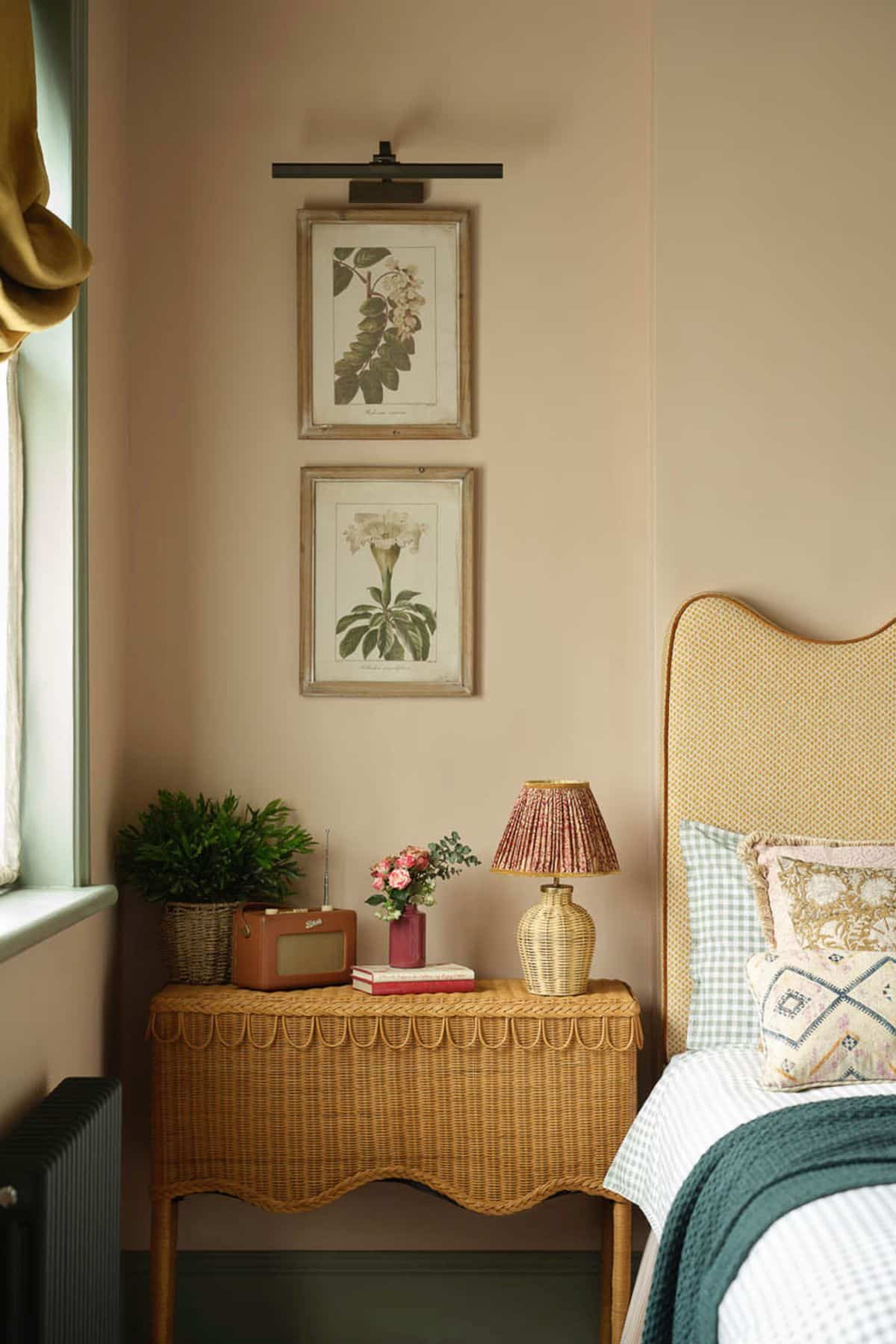
Feeling cosy, protected and ultimately comforted is shaping up to be the antidote to the bolder bedroom trends predicted for 2026.
Earthy inspired interior design is raging through our homes right now, and it’s easy to see why. It’s impossible to feel bad when surrounded by a good green, and earthy tones, materials and decorating choices all point towards this in the year ahead.
It’s clear that we all need something to soothe us, and whilst our home is our haven, bedrooms seal the deal. So, make that first and last sight of everyday be one that fuels you right for 2026, with these incoming bedroom trends.
What’s Next for the Bedroom? 9 Trends Emerging for 2026
In 2025, colour drenching became a top decorating choice for bedrooms, with earthier colours, warm wooden tones and an initial nod to earthy inspired design becoming big trends.
We’re seeing a continuation of some of these trends this year, with much more of a focus on creating wellness-oriented spaces and a stronger use of colours linked to nature in the bedroom.
I’ve enlisted the help of some experts in the industry, along with my own insights on what is shaping our bedrooms in 2026.
1.Earthy Colour Palettes
Bedroom schemes grounded by nature are at the heart of interior trends for 2026 and beyond. Whilst not a new trend, it’s one that’s not going anywhere anytime soon. Humans have that intrinsic link to nature, so naturally, being surrounded by an earthy colour palette makes us feel good.
Angie Kreller, an interior designer at Yabby said, “We are seeing deeper tones become more popular, but not shades of grey and black. Instead, think of more earth-inspired tones, like browns and greens“.
“When used in spaces like bedrooms, they will make the room feel comfortable and tranquil, which is perfect for unwinding after a long day – and even better to fall asleep surrounded by”.
Paint brands colours of the year are also indicative for the year ahead, and they mostly all point towards earthy tones and warm neutrals. Check out Valspar’s colour of the year Warm Eucalyptus, an earthy green. Sherwin Williams Universal Khaki and Benjamin Moore’s Silhouette, a unique expresso hue with refined notes of charcoal.
Take a look at these gorgeous earthy bedroom design ideas for more inspiration to help you get started.
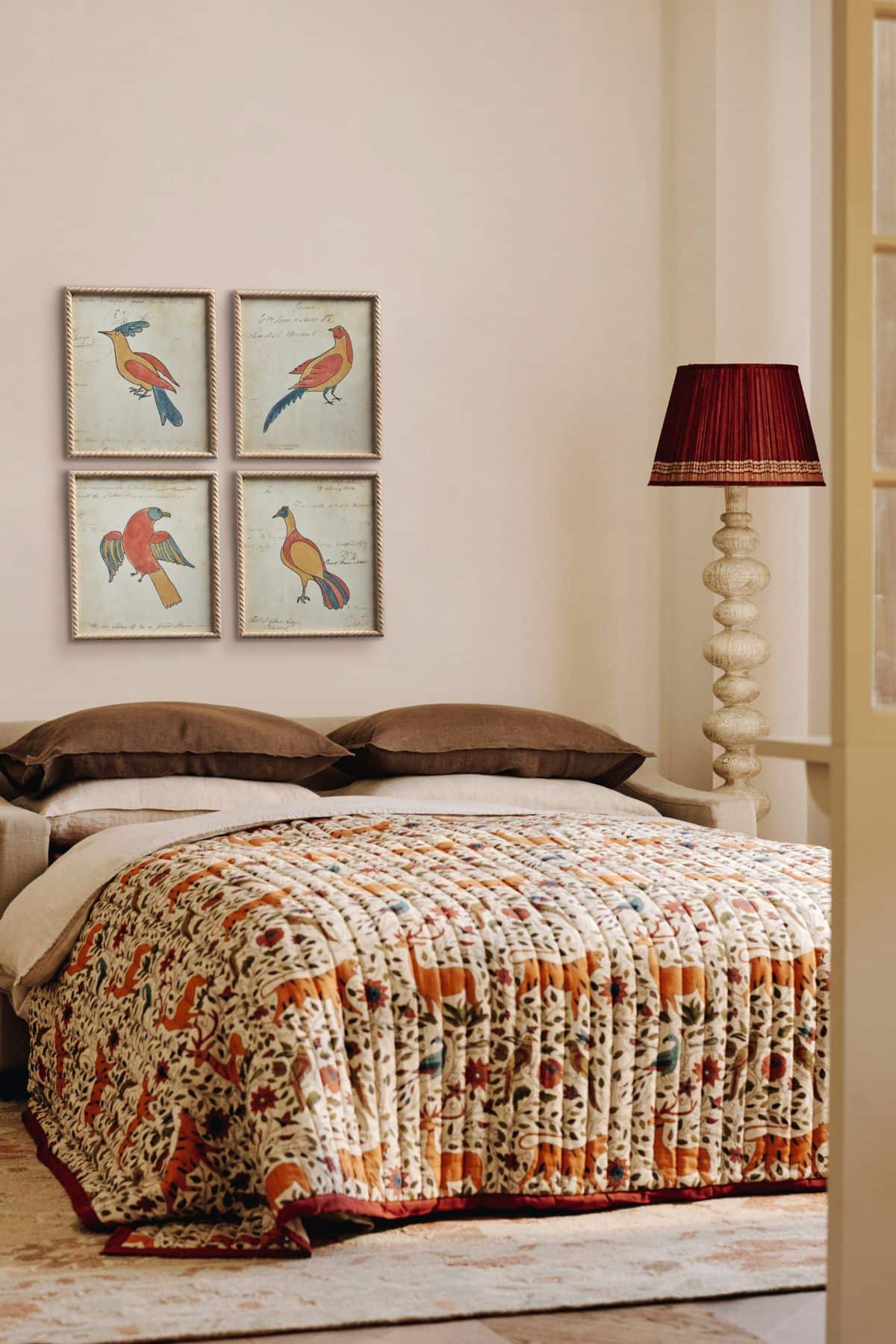
2. Liberating Maximalism
Embracing colour without reservation has very much been at the forefront of the trends for the last couple of years. Far flung from the years of beige, white and grey, we’ve been hand held for long enough to understand the importance of using colour in our interiors, and it’s carving the way for more personal, unique spaces. This is leading to a rise in ‘liberating maximalism’.
“2026 gives bedrooms permission to embrace boldness, with personal maximalism taking centre stage. This trend celebrates joy, identity and creating spaces that reflect you”.
“Think vibrant wallpaper, layered prints, gallery walls and shelves of treasured objects. Colour-clashing cushions, patterned quilts, and vintage finds all have their place”, says Wallsauce.
Whilst more is generally more with maximalism, it doesn’t mean everything has to clash. Tying in key colours that feature in wallpaper to your paint or accessories will help to keep the space intentional, and well connected.
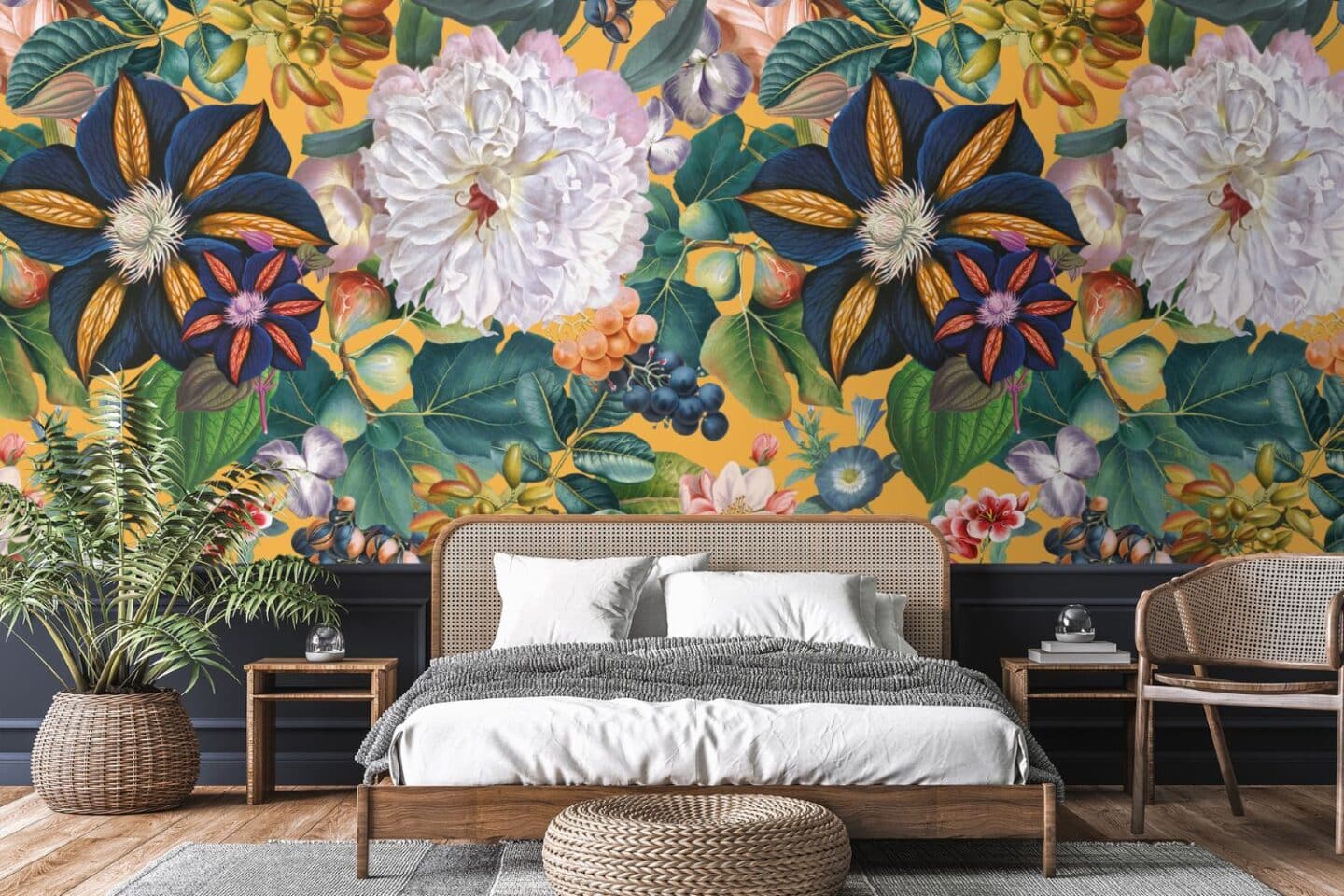
3. Wellness-Oriented Spaces
Earthy interior design continues to be on the rise, and this further promotes the upcoming trend of wellness-oriented spaces that feel good to be in. This particularly becomes true in the bedroom, the first and last place you see in a day, and one where you wanted to feel protected, safe and enveloped by your surroundings.
Angie agreed, “One of the biggest trends I can see coming in 2026 is more of a focus on wellness-oriented spaces, like personal sanctuary spaces”.
“What we are seeing are homeowners looking for bedrooms that look and feel like personal retreats, focusing on calm tones and soft feelings. This means things like plants, organic materials, and earthy tones are going to boom in popularity”.
Wallsauce also suggests creating a tech-free zone in a bedroom to create a better night’s sleep. “Wellness-focused bedrooms are about designing spaces that nurture both mind and body, offering a daily dose of calm and rejuvenation”.
Not sure where to get started with the design? As Angie suggests, earthy interior design is a great base for this. Use colours that can be derived from your surroundings, think greens, browns, reds and creams, and consider using natural materials that bring natural warmth to a room, linen, rattan and wood are great choices that are easily available.

4. Red Is Still Having A Moment
We have a lot to thank the viral, ‘unexpected red theory’ for as it’s thrust red into our homes for all the right reasons, and the theory actually does work in practice! The theory suggests that adding a single pop of red to your room is enough to focus the eye and create a finished interior scheme.
Most viral trends have somewhat of a shelf life, but Angie shared that red tones are still making their way into bedroom design in 2026, but they’re not the primary type of reds you might be thinking of.
“Instead, think of more rusty and burnt reds, which will make the room feel warm and more earthy. I don’t think we will see them get more popular, instead, I think we will continue to see it used sparingly”.
Be it an accent wall like the below OKA image or a single red lamp on a bedside table, the key to getting this one right really is to follow the less is more paradigm.
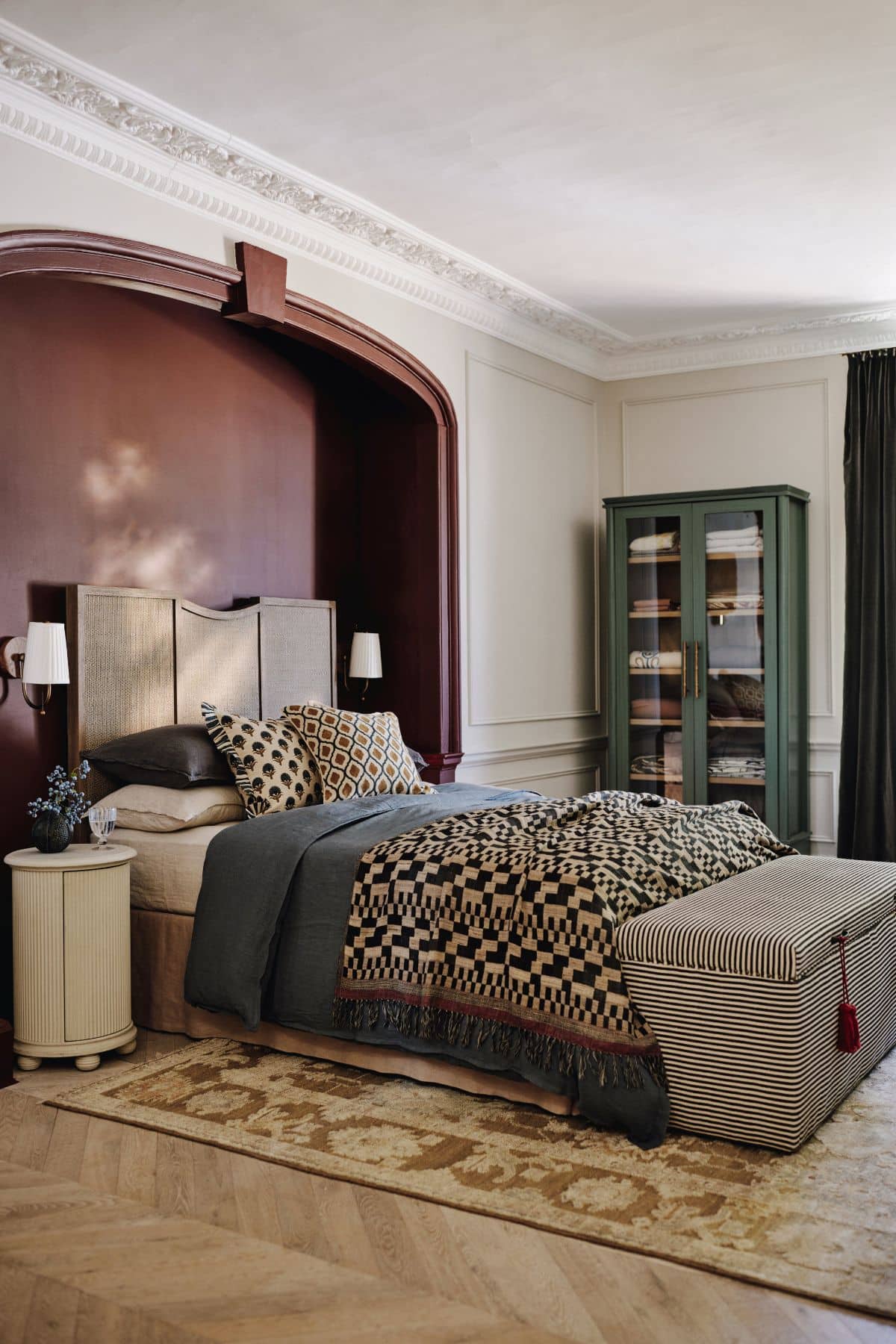
5. Multifunctional Furniture
The amount of space we have in our homes is one non-negotiable, and not something that changes with fleeting trends year upon year. This is something we really see shaping the type of furniture that’s popular in bedrooms right now.
“With smaller spaces being more common, we are seeing more people prioritise pieces of furniture with storage. To capitalise on this trend, and to make the most of the space, multifunctional furniture will be your go-to”.
“You can easily find this in pieces like storage beds, ottomans or even shelving units – all which will give your room an elevated feel without losing precious space”, says Angie.
Taking inspiration from Japanese design is another way to really see how adapting furniture to smaller spaces can be done well. Forfeiting bedside tables for a small wall mounted shelf is a great compromise, keeping floor space free, yet still offering a practical value to it.
And, if you have a spare bedroom that you want to share with an office or for another use, you might also want to consider something temporary like futon mattresses that can easily be stored away when not in use. A form of bedding that has been celebrated and used by the Japanese for years.
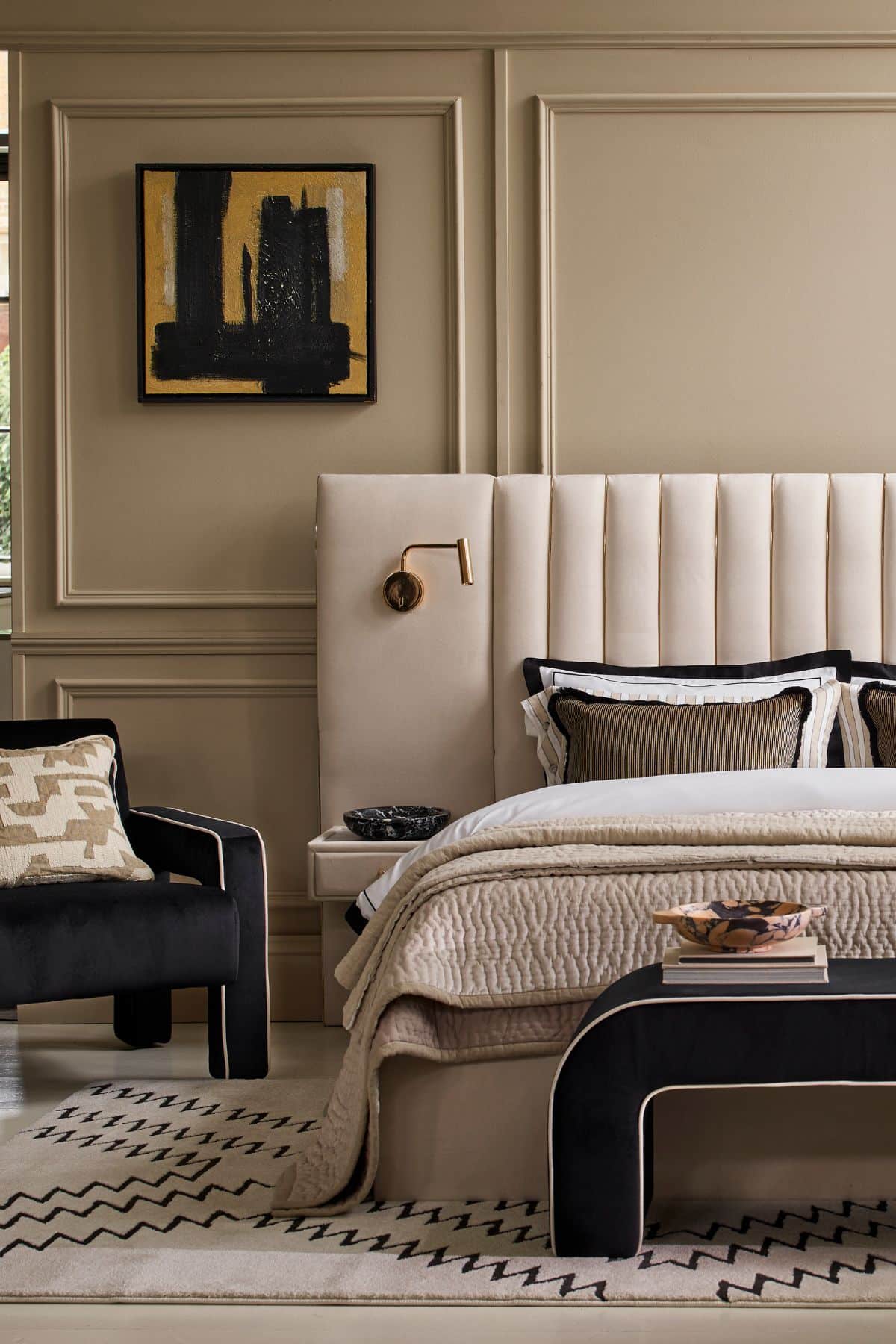
6. Fifth Wall Inclusion
The ship has well and truly sailed on the bright white ceilings of interiors past, and being creative with colour and decorating is very much on the bingo card for 2026.
Including the ceiling in our bedroom design plans, rather than an afterthought has mostly been driven by the ever popular ‘colour drenching trend’, but it’s enabling us to go one step further and lean into a completely separate paint colour if we choose, or even to wallpaper it.
There are so many possibilities for the ceiling that weren’t once considered, and it’s an exciting way to draw the eye in, and even to give the illusion of a bigger space.
I get a lot of questions about colour drenching in general and whether it makes a low ceiling look smaller or a room feel like a box. The beauty of engaging all the walls in a room is that it creates a seamless look, it has the ability to make a smaller room feel bigger, whilst it makes an expansive room feel cosier, and more intimate. However, choosing a very bold or deep colour in a tiny room can make smaller rooms feel even smaller. You do need to be mindful about your paint choices when adopting this approach.
Alternatively, taking a ceiling colour down to a picture rail (or around 30cm down onto the walls) is another clever way of creating a cosier space, whilst it avoids cutting the room off visually.
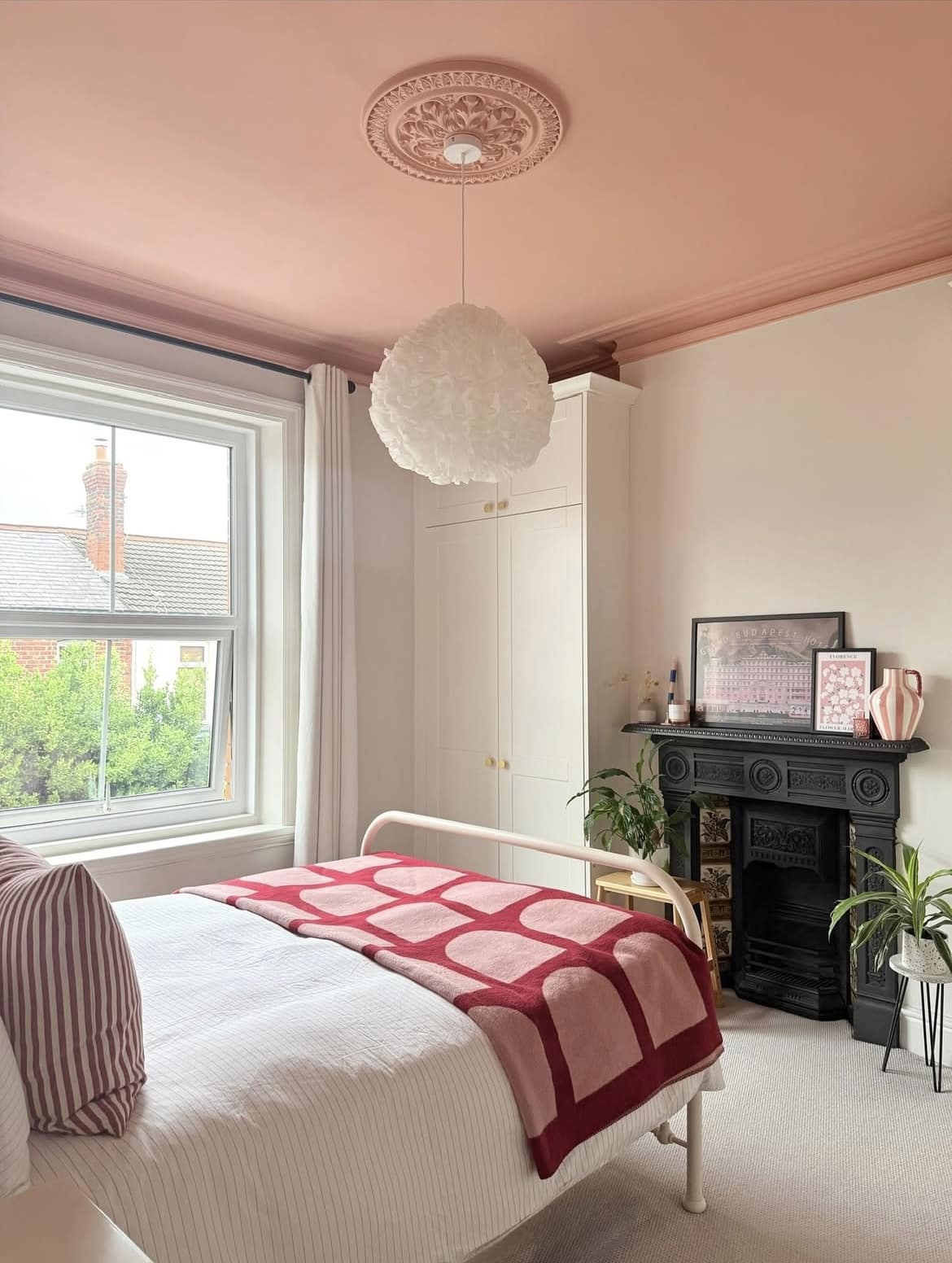
7. Switching Up The Woodwork Colour
With ceilings being turned on their head, you can expect the same thing from your woodwork colour. People are waking up to the fact that woodwork doesn’t just have to be bright white. It’s certainly the easiest decision you can make, but there are better options.
Whilst colour drenching makes woodwork adopt the same colour, choosing a woodwork colour that’s at least 2 shades darker than your wall colour is a growing approach, and one that delivers effortless definition and style to a space. By leaning into this darker shade with the same undertone, it makes a room look so much more put together, and arguably, it’s just as easy as picking a shade of white.
There are various other iterations for your woodwork colour, or why not make like the below that extends the wall colour in Book Room Green by Little Greene onto the skirting for an elevated look, with Strong White by Farrow and Ball on the ceiling, and the rest of the woodwork.
If you’re wallpapering and not sure what to do, try and pick out one of the tones from the wallpaper and use this on the woodwork for an intentional look. Many decorating centres also have the tools to find a hex code from within your wallpaper and get a unique colour mixed up if you’re struggling to find a close match.
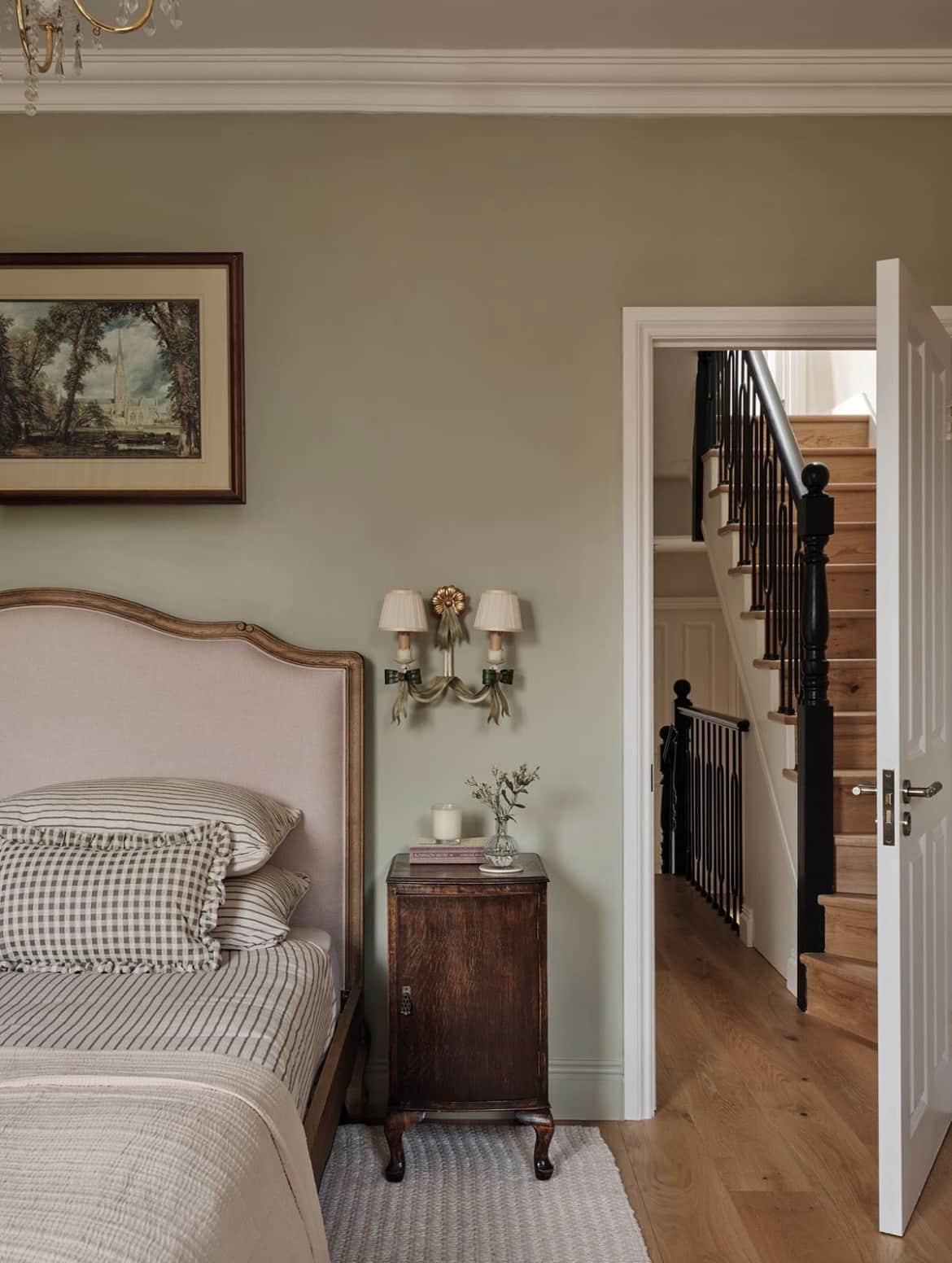
8. Earthy, Natural Materials
Earthy design is the signature style of the moment, and the rise of using earthy, natural materials in our bedroom designs is abundantly apparent.
Natural materials are materials that can be derived from nature, for an earthy bedroom scheme this typically includes elements such as wood, rattan, glass, seagrass and linen.
It’s actually one of the easiest interior design schemes to recreate as the materials are naturally abundant, and usually inexpensive.
A few touches of rattan is enough to breathe that natural warmth into a bedroom, and they complement any earthy tones you may already have in situ. Light shades and baskets are such easy ways to do this, and enduringly practical.

9. Layered Lighting Is A Must
The rise of rechargeable lighting has made it easier than ever to create ambient, layered lighting schemes, without the need for costly electrical work.
As we approach 2026, the availability and price point is ever wider than it previoysly was which makes it an option for many more households.
A bedroom is a key space to get your lighting plan right, downlights just shouldn’t be an option here. Unless they’re installed with a dimmer switch, they offer no felxibilty. Layering with a few different light sources is still the best way to plan a scheme in your bedroom.
An overhead light brings light and design, whilst supporting this with a table lamp, floor lamp or even wall lights such as art lights above artwork will help to create ambient pockets of light without blinding yourself with the overhead light last thing in the evening.
Rechargeable table lamps are ideal for bedside tables which may not have nearby plug sockets, and they up the design stakes. Whilst many rechargeable lamps can be found under the £100 price bracket now, you can turn any lamp into a rechargeable one by swapping the bulb for an LED rechargeable bulb instead.
It’s the future of lighting, and let’s face it, unsightly wires just aren’t cutting it for 2026, this is the way.

